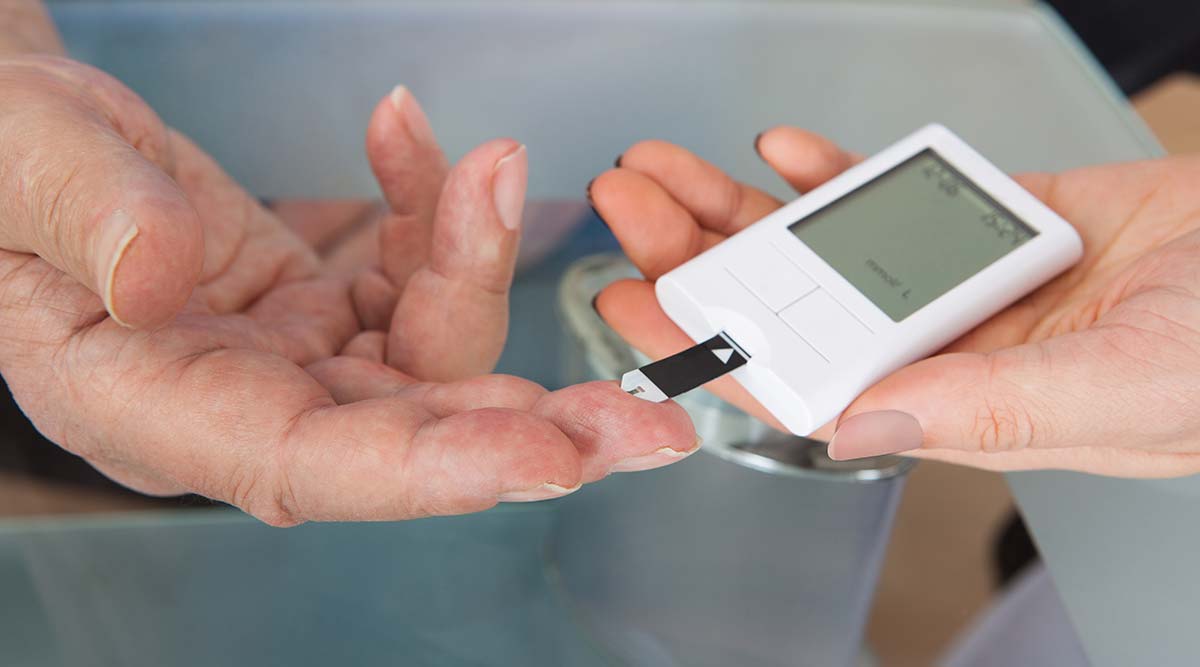Are you helping an aging parent manage their Type II diabetes? You’re not alone. In fact, upwards of 1 in 4 seniors has diagnosed diabetes making it one of the most prevalent chronic conditions. Left unmanaged, diabetes can result in dangerous blood sugar spikes that can contribute to kidney failure, vision loss, stroke, dental disease, skin infections, hypertension, depression, heart disease, diminished blood flow in the legs and feet, and nerve damage.
If your caregiving duties include helping a loved one manage their Type II diabetes, don’t miss this essential checklist:
Self-monitoring
Does your loved one regularly monitor their own blood sugar at home? This simple action can play a crucial role in helping them get control of their condition. Because high blood sugar may not be symptomatic, it is easy for people with diabetes to ignore their condition until something bad happens. Self-monitoring can help keep them more aware and on track.
Routine self-monitoring requires a simple blood sugar monitor, test strips, and a way to record readings (either in the device itself, on a separate sheet of paper, or even in your smartphone). Ask your loved one’s doctor when are the best times for checking blood sugar and set a schedule accordingly.
Caregiver tip: Keep blood sugar monitoring supplies in one convenient place (like a bag or basket) and help your loved one stick to a schedule for checking their blood sugar, i.e. in the morning, at night, and before and after exercise. Setting reminders on their watch, alarm clock, or smartphone can help.
Medication Management
In addition to diet and exercise, medication may play a role in managing your loved one’s diabetes. Common Type II diabetes drugs like Metformin come in pill form and may be juggled with other medications like multivitamins or those for accompanying conditions like high blood pressure.
Adhering to a medicine schedule isn’t always easy, especially when similar-looking pill bottles and confusing medication names are at play. Utilize easy-to-open pill organizers to sort all your parent’s medicine in advance by the day of the week (and time of day if needed).
Caregiver tip: You can find fairly inexpensive pill organizers at your local pharmacy or online. Make sure they have easy-to-read labels and that your parent can successfully open and close them without difficulty. Keep track of medication refills and dosage times with apps like CareZone, MediSafe, or those from the pharmacy where prescriptions are filled.
Routine Exercise
When it comes to managing diabetes with physical activity,
‘routine’ is key. Daily exercise supports a healthy weight and can improve
insulin sensitivity in the body to lower blood glucose levels.
Because exercise is so powerful, it’s important to talk to your loved one’s
doctor prior to kickstarting a new exercise regimen. They may suggest checking
blood sugar levels prior to exercise and consuming specific carbohydrates to
prevent sudden blood sugar drops.
Caregiver tip: If your loved one is less than willing to exercise each day, encourage them to start small. A simple brisk walk or hike, swimming laps, cycling, or trying out a fitness class at the local gym or senior center are great places to start. And don’t hesitate to join in with them! Research has shown that exercising with a buddy can provide more motivation and even make you exercise longer and harder.
Eating a Balanced Diet
One of the most important tasks caregivers assist with is preparing food and making sure their loved one is getting proper nutrition. When it comes to managing diabetes, diet is essential. Both reducing carbohydrate intake, as well as increasing consumption of critical vitamins, minerals, and other nutrients, equip the body with the tools it needs to combat high blood sugar.
Depending on the stage of your loved one’s diabetes, they may be meeting with a nutritionist on top of their primary care doctor and diabetes specialist. If you help prepare your mom or dad’s meals, attend nutritionist appointments with them. Discuss how many carbs they should be having per day, how to properly read food labels, and what foods are and are not recommended.
Caregiver tip: Become a pro at reading nutrition labels on packaged food products and try to incorporate more whole, plant-based foods into the weekly diet, i.e. vegetables, whole grains, nuts, seeds, and fruit. And watch out for hidden sugars in seemingly healthy foods like flavored Greek yogurt, dried fruit, salad dressings, and granola bars.
Additional Thoughts
Did you know that stress can lead to blood sugar spikes? For caregivers, stress is no stranger so it may be pertinent for you to practice stress relief techniques with your loved one who has Type II diabetes. Yoga, meditation, massage, aromatherapy, even coloring have been shown to help people manage stress for a healthier mind and body.

